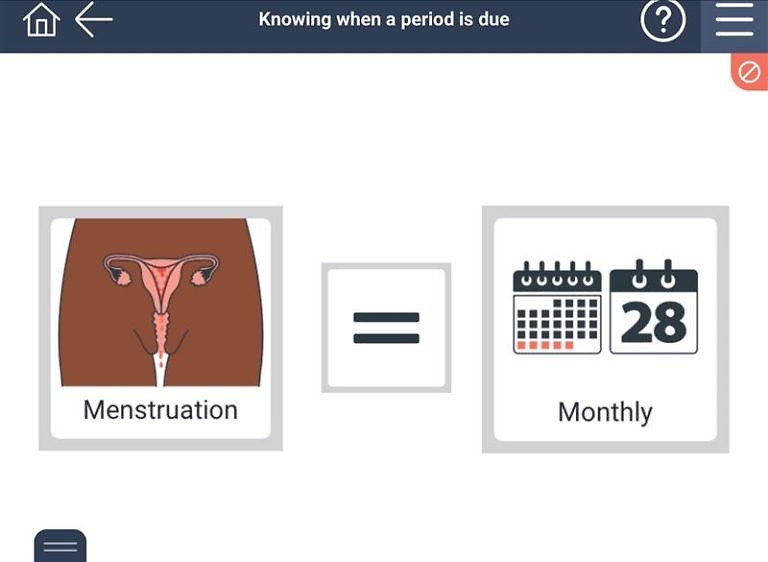Knowing when a period is due
You can save a PDF of this lesson by printing this page and clicking “Save to PDF”
This lesson supports curriculum codes:
- ABLEWA Stage B (VCHPEP020)
- ABLEWA Stage C (VCHPEP032; VCHPEP034)
- ABLEWA Stage D (VCHPEP046; VCHPEP048)
- Year 6 (ACPPS052)
Overview
This lesson supports understanding and awareness of the menstrual cycle to develop skills for being prepared for periods.
Foundation Knowledge for this lesson includes differentiation of male and female bodies; awareness of age and body differences between babies, children, adolescents, and adults; receptive identification of vagina; public and private body parts; receptive identification of sanitary pads, bin, toilet, and underpants; receptive identification of blood.

Generalisation ideas:
- Tracking: use a physical or digital calendar to track premenstrual symptoms, start days, stop days, heavy days, light days, etc. to support developing independence around menstrual management.
- Period bag: put together useful items to carry when a period is close to due (e.g. pads, spare underpants, plastic bag).
- Special drawer: set aside a designated space in a bathroom, bedroom, or toilet that holds pads and spare underwear.
- Watch DVDs: watch educational clips/movies about managing periods e.g. Tara Grows Up (by IHC NZ).
- Frequent talks: allow time to discuss premenstrual symptoms, any changes noticed, and develop strategies to manage and track these.
- App trackers: there are a number of Apps available for Apple and Android smartphones and devices that allow daily input of signs and symptoms and provide visual cues for when a period is due to start.
